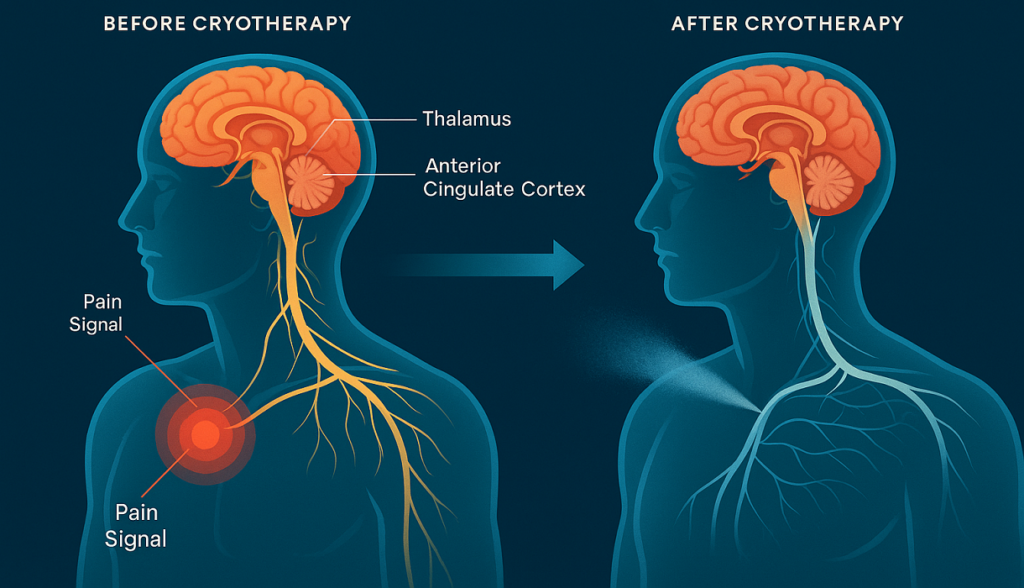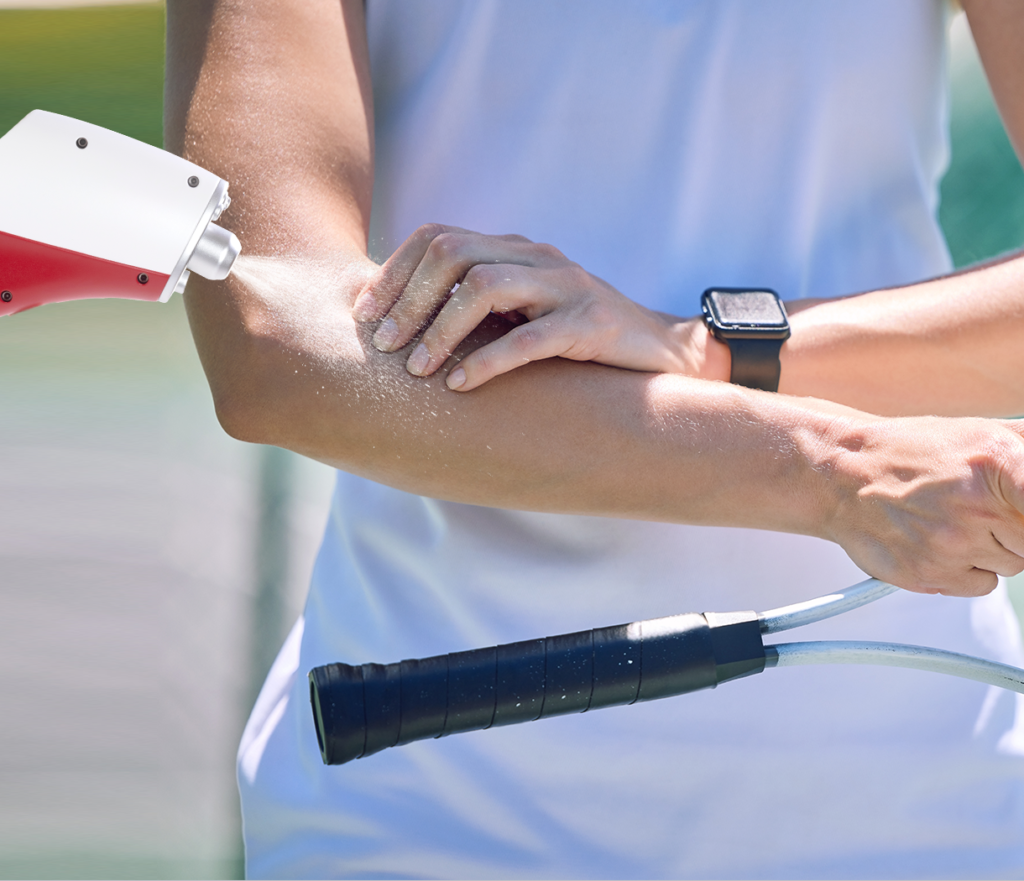Chronic pain affects millions of individuals worldwide, creating a persistent burden that extends far beyond physical discomfort. Traditional pain management approaches often fall short of providing lasting relief, leaving patients searching for innovative solutions. CO₂ cryotherapy has emerged as a revolutionary treatment modality that addresses chronic pain through precise, targeted cold therapy, offering hope to those who have exhausted conventional treatment options.
Understanding the Root Causes Beyond Inflammation
The complexity of chronic pain extends well beyond simple inflammatory processes, encompassing neurological, psychological, and biomechanical factors that create persistent discomfort. Modern pain science reveals that chronic pain conditions involve complex interactions between the central and peripheral nervous systems, requiring treatment approaches that address multiple pathways simultaneously. Understanding this multifaceted nature is crucial for developing effective therapeutic interventions that provide sustainable relief.
Chronic Pain: More Than Just Inflammation
Chronic pain represents a complex neurological phenomenon involving sensitization of nociceptors, altered neurotransmitter function, and maladaptive plasticity within the central nervous system. Unlike acute pain, which serves as a protective mechanism, chronic pain becomes a pathological condition characterized by persistent neural hyperexcitability and dysregulated pain processing. The condition involves multiple mediators including substance P, calcitonin gene-related peptide (CGRP), and various inflammatory cytokines that perpetuate the pain cycle. Traditional anti-inflammatory approaches often prove inadequate because they fail to address the underlying neurological changes that maintain chronic pain states.
The Role of Cryotherapy in Resetting the Nervous System
Cryotherapy provides a unique approach to pain management by directly influencing neural transmission and creating opportunities for nervous system recalibration. The application of extreme cold temperatures triggers immediate changes in nerve conduction velocity, temporarily blocking pain signal transmission through A-delta and C-fibers. This interruption in pain signaling allows the nervous system to reset its baseline sensitivity levels. Additionally, cold exposure activates the parasympathetic nervous system, promoting a state of physiological calm that counteracts the chronic stress response often associated with persistent pain conditions.
CO₂ Cryotherapy’s Role in Modifying the Pain Experience
CO₂ cryotherapy represents a sophisticated evolution in cold therapy technology, utilizing carbon dioxide to achieve precise temperature control and enhanced therapeutic outcomes. This advanced approach to cryotherapy offers superior penetration and more consistent temperature delivery compared to traditional ice applications or other cryotherapy modalities. The unique properties of CO₂ allow for rapid cooling to extremely low temperatures while maintaining safety and comfort for patients throughout the treatment process.
Recalibrating the Body’s Pain Perception

The precise application of CO₂ cryotherapy at -78°C creates an immediate and profound alteration in peripheral nociceptor function, effectively reducing their sensitivity to painful stimuli. This temperature-induced modulation affects both mechanical and chemical nociceptors, creating a temporary analgesic effect that can last for several hours post-treatment. The rapid cooling process triggers the gate control mechanism, where non-noxious sensory input effectively blocks the transmission of pain signals to the brain. This neurophysiological response provides immediate relief while creating opportunities for longer-term pain pathway modifications through repeated treatments and neuroplasticity mechanisms.
CO₂ Cryotherapy and the Brain: Unlocking Long-Term Relief
Hyperbaric CO(2) cryotherapy is an innovative tool that should be incorporated within the non-pharmacological armamentarium for achieving pain relief in older patients. The central nervous system responds to CO₂ cryotherapy through multiple mechanisms including enhanced endorphin release, modulation of descending pain inhibitory pathways, and changes in cortical pain processing areas. Neuroimaging studies suggest that cryotherapy can influence activity in the anterior cingulate cortex, thalamus, and somatosensory cortex, regions critically involved in pain perception and emotional processing. These neurological changes contribute to long-term pain relief by promoting adaptive neuroplasticity and reducing central sensitization patterns that maintain chronic pain states.
CO₂ Cryotherapy as a Tool for Improving Movement and Function
Beyond pain reduction, CO₂ cryotherapy serves as a catalyst for functional restoration, addressing the movement limitations and disability that often accompany chronic pain conditions. The therapeutic benefits extend to improved joint mobility, enhanced muscle function, and restoration of normal movement patterns that have been compromised by pain-related compensatory mechanisms. This functional improvement is essential for breaking the cycle of pain, disability, and deconditioning that characterizes many chronic pain syndromes.
Restoring Functionality: More Than Pain Reduction
CO₂ cryotherapy facilitates functional restoration through multiple physiological mechanisms including reduction of muscle spasticity, improvement in joint range of motion, and enhancement of proprioceptive feedback. The cold-induced reduction in muscle tension allows for improved movement quality and reduced compensation patterns that contribute to ongoing dysfunction. Additionally, the analgesic effects of cryotherapy enable patients to engage more fully in therapeutic exercises and rehabilitation activities, accelerating the recovery process. The treatment’s ability to reduce pain-related fear and movement avoidance behaviors is particularly important for restoring normal functional capacity in chronic pain patients.
Restoring Joint Health in Chronic Pain Conditions
The application of CO₂ cryotherapy promotes joint health through several mechanisms including reduction of intra-articular inflammation, improvement in synovial fluid circulation, and enhancement of cartilage metabolism. Cold therapy has been shown to reduce the production of inflammatory mediators within joint spaces while promoting the synthesis of protective factors such as hyaluronic acid. The vasoconstrictive effects of extreme cold help reduce joint swelling and effusion, allowing for improved mechanical function and reduced stiffness. These effects are particularly beneficial for individuals with inflammatory arthritis, osteoarthritis, and other degenerative joint conditions where pain and dysfunction are interconnected.
Cryotherapy as a Gateway to Holistic Pain Management
The integration of CO₂ cryotherapy within comprehensive pain management protocols represents a paradigm shift toward multi-modal therapeutic approaches. Rather than serving as a standalone treatment, cryotherapy functions as an enabling technology that enhances the effectiveness of other therapeutic interventions while reducing reliance on pharmacological pain management strategies. This holistic approach recognizes that sustainable pain relief requires addressing multiple aspects of the pain experience simultaneously.
A Multi-Modal Approach: Cryotherapy with Active Recovery
The combination of CO₂ cryotherapy with active recovery strategies creates synergistic therapeutic effects that exceed the benefits of either approach alone. The immediate analgesic effects of cryotherapy provide a therapeutic window during which patients can engage in previously painful movements and exercises with reduced discomfort. This combination approach facilitates neuromuscular re-education, strengthening of weakened muscles, and restoration of normal movement patterns. The timing of cryotherapy applications can be strategically coordinated with physical therapy sessions, exercise programs, and other rehabilitation interventions to maximize therapeutic outcomes and accelerate functional recovery.
Integrating CO₂ Cryotherapy with Other Innovative Treatments
Modern pain management increasingly embraces integrative approaches that combine conventional and innovative therapies to address the multifaceted nature of chronic pain. CO₂ cryotherapy complements other emerging treatments such as neurofeedback, transcranial magnetic stimulation, and regenerative medicine approaches. The anti-inflammatory effects of cryotherapy can enhance the effectiveness of regenerative therapies by creating an optimal healing environment. Similarly, the neurological effects of cold therapy may potentiate the benefits of neuromodulation techniques. This integrative approach allows for personalized treatment protocols that address the unique needs and characteristics of individual chronic pain patients.
The Science of CO₂ Cryotherapy: How Cold Alters Biological Pathways
The therapeutic mechanisms underlying CO₂ cryotherapy involve complex physiological cascades that extend far beyond simple cooling effects. Understanding these biological pathways provides insight into the treatment’s effectiveness and guides optimal application protocols. The scientific foundation of CO₂ cryotherapy encompasses vascular, neurological, metabolic, and immunological responses that collectively contribute to pain relief and functional improvement.
Cryotherapy and the Biomechanics of Pain Relief
Exposure to cold temperatures causes the blood vessels in the body to constrict, reducing blood flow to the affected area, which initiates a complex cascade of physiological responses that contribute to pain relief. The biomechanical effects of CO₂ cryotherapy include immediate vasoconstriction followed by reactive hyperemia, which enhances nutrient delivery and waste product removal from tissues. Cold-induced changes in tissue viscosity and elasticity can improve joint mechanics and reduce mechanical stress on pain-sensitive structures. The treatment also influences muscle spindle sensitivity and Golgi tendon organ function, leading to reduced muscle tension and improved neuromuscular control patterns that support pain reduction.
Temperature-Specific Mechanisms: Why CO₂ is Superior to Ice and Other Cryotherapies
Microcrystals of dry ice at very low temperature are sprayed under high pressure on the painful site. The result is a sudden, quasi-immediate drop in skin temperature that provides therapeutic advantages over traditional cooling methods. CO₂ cryotherapy achieves temperatures of -78°C with precise control and even distribution, enabling deeper tissue penetration than conventional ice applications. The rapid temperature change achieved with CO₂ creates more pronounced physiological responses including greater endorphin release and more significant neural blockade. Treatment duration of 10-15 seconds provides optimal therapeutic benefit while minimizing risk of tissue damage, making CO₂ cryotherapy both more effective and safer than prolonged ice applications.

CO₂ Cryotherapy’s Potential for Pain Prevention
The preventive applications of CO₂ cryotherapy represent an emerging frontier in pain management, focusing on intervention before chronic pain patterns become established. This proactive approach recognizes that early intervention can prevent the neurological changes associated with pain chronification, potentially avoiding the development of persistent pain conditions. The use of cryotherapy in prevention requires understanding of pain development mechanisms and risk factors that predispose individuals to chronic pain.
Proactive Use: Cryotherapy to Prevent Chronic Pain from Developing
Early application of CO₂ cryotherapy following acute injuries can prevent the transition from acute to chronic pain by interrupting inflammatory cascades and preventing central sensitization. The treatment’s ability to reduce initial tissue damage and inflammation may prevent the establishment of persistent pain pathways that characterize chronic conditions. Prophylactic use of cryotherapy in high-risk populations, such as individuals with occupational injury risks or those undergoing surgical procedures, may reduce the incidence of chronic pain development. This preventive approach requires careful timing and protocol development to maximize protective effects while avoiding interference with natural healing processes.
The Role of Cryotherapy in Reducing Pain Sensitivity in the General Population
Population-based applications of cryotherapy may offer benefits for pain sensitivity reduction and resilience building in healthy individuals. Regular exposure to controlled cold stress through CO₂ cryotherapy can enhance the body’s adaptive responses to painful stimuli and reduce baseline pain sensitivity. This conditioning effect may be particularly valuable for individuals at risk of developing chronic pain due to genetic, occupational, or lifestyle factors. The treatment’s ability to enhance stress resilience and improve recovery from physical challenges suggests broader applications in pain prevention and health optimization strategies.
The Psychological Benefits of CO₂ Cryotherapy
The psychological dimensions of chronic pain require therapeutic approaches that address both the emotional and cognitive aspects of the pain experience. CO₂ cryotherapy provides unique psychological benefits that complement its physiological effects, creating a comprehensive treatment experience that addresses the full spectrum of chronic pain challenges. Understanding these psychological mechanisms is essential for maximizing treatment outcomes and patient satisfaction.
Overcoming Pain Anxiety with Cryotherapy
Chronic pain often creates a cycle of anticipatory anxiety and fear-avoidance behaviors that perpetuate disability and suffering. CO₂ cryotherapy helps break this cycle by providing immediate, tangible relief that reduces anxiety and builds confidence in the body’s capacity for healing. The controlled nature of the treatment allows patients to experience relief in a safe, predictable environment, gradually reducing fear responses associated with pain. The brief treatment duration and immediate effects help establish positive associations with therapeutic interventions, potentially improving compliance with other aspects of pain management programs.
Patient Empowerment: Empowering Chronic Pain Sufferers to Take Control
The experience of receiving CO₂ cryotherapy can foster a sense of agency and control that is often lost in chronic pain conditions. The active participation required during treatment and the immediate feedback of pain relief help restore patients’ confidence in their ability to influence their pain experience. This empowerment extends beyond the treatment session as patients develop greater awareness of their pain patterns and triggers. The non-invasive nature of CO₂ cryotherapy appeals to patients seeking alternatives to pharmaceutical interventions, providing a sense of ownership over their treatment approach.
The Evolving Role of CO₂ Cryotherapy in Pain Management
The shift from nitrogen-based to electricity-driven CO₂ cryotherapy systems is rapidly transforming the pain management landscape. These advanced CO₂ systems offer improved precision, safety, and therapeutic outcomes, reflecting a broader trend in healthcare toward personalized, non-invasive treatments that address root causes rather than just symptoms. The future of CO₂ cryotherapy involves developing precision medicine approaches, with innovations like temperature monitoring and treatment mapping for more tailored therapies. Digital health integration and remote monitoring may further expand access while ensuring safety. Ongoing research is exploring optimal treatment protocols and combination therapies, with emerging evidence suggesting benefits for complex pain conditions like neuropathy and fibromyalgia. As scientific support grows, CO₂ cryotherapy is poised to become a mainstream tool in pain management.
FAQs
By rapidly cooling targeted areas, CO₂ cryotherapy triggers the body’s natural pain-relieving mechanisms, including the release of endorphins and altering the way the brain processes pain signals. This helps the body reset its pain threshold and promotes long-term relief from chronic conditions.
Yes, CO₂ cryotherapy not only reduces pain but also restores joint functionality. By enhancing circulation, reducing inflammation, and stimulating tissue regeneration, it helps patients regain mobility and improves the range of motion in areas affected by chronic pain or injury.
CO₂ cryotherapy is most effective when combined with other treatments like physical therapy, exercise, and lifestyle changes. This multi-modal approach targets pain from various angles—reducing inflammation, improving mobility, and addressing the psychological aspects of chronic pain for comprehensive relief.
The cooling effect of CO₂ triggers vasoconstriction, reducing inflammation and swelling in affected areas. At the cellular level, it alters the biomechanics of pain by stimulating the production of pain-relieving molecules like endorphins, while also reducing nerve sensitivity, offering longer-lasting relief compared to traditional therapies.
Yes, regular use of CO₂ cryotherapy can prevent pain by addressing early signs of discomfort or inflammation before they become chronic. By reducing pain sensitivity and supporting the body’s natural healing processes, CO₂ cryotherapy can help avoid the development of long-term pain conditions.



